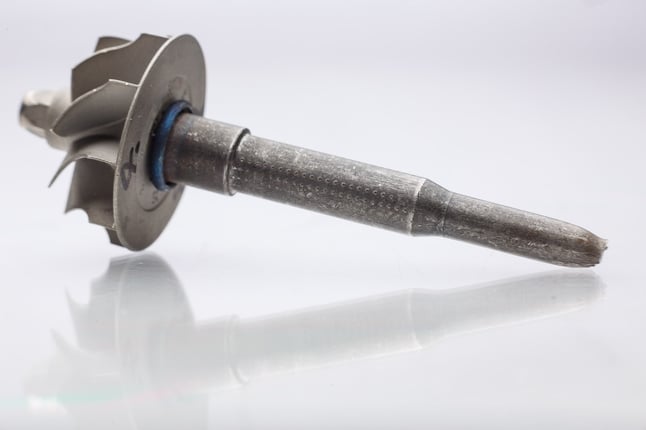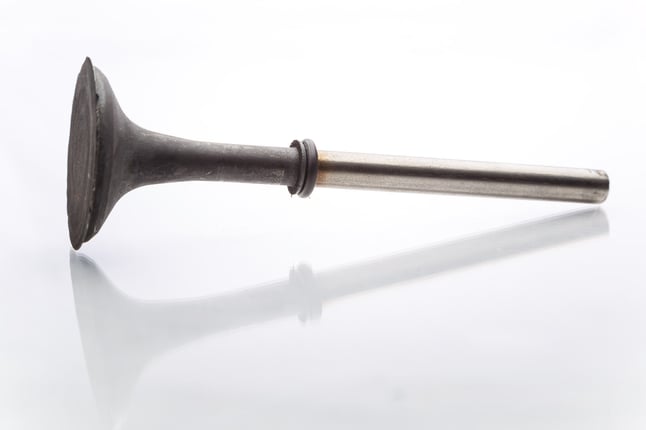
Steel and Inconel: they look similar, but metallurgically speaking, they’re two very different materials. They melt at different temperatures, they have different densities and their forgeabilities vary greatly.
Because of those contrasts, it’s difficult and often impossible to join Steel and Inconel with traditional welding methods.
That’s where friction welding comes in. One of the biggest advantages of friction welding is the ability to join dissimilar metals.
But why is the combination of Steel and Inconel so popular among several industries?
Let’s take a look at some of the most common applications:

Turbochargers are one of our most popular bimetal parts.
To achieve optimal performance, the shaft needs to be made of a wear-resistant, hardenable steel and the wheel needs to be made of a heat-resistant, high-strength material. For this application, Steel is an ideal choice for the shaft and Inconel for the wheel.
If a turbocharger was completely made from steel, the wheel would get too hot and wear down too quickly.
On the other hand, if a turbocharger was made completely from Inconel, the stem would experience much more wear and tear. The heat-resistance of Inconel is strong, but it simply does not have the durability of steel.
Friction welding is the best solution for this application because materials don't melt during the process, creating a stronger weld.

The combination of Steel and Inconel is also ideal for engine valves. A critical part of a combustion engine, engine valves are exposed to a lot of heat on the flat side, or the head. Meanwhile, the stem gets more contact with other components. For similar reasons we would combine Steel and Inconel to make a turbocharger, this combination is also favorable for engine valves because no melting occurs.
Aside from durability, friction welding can also lead to lower costs and less wasted material for our customers. The process allows us to create a near-net shape component with the material properties exactly aligned with where the customer requests them.
There are countless other ways we can use bimetals to benefit our customers. Check out this video below, highlighting some of our most popular bimetallic combinations and to learn how they could bring value to your production line:
Why MTI
MTI has decades of experience joining bimetallic applications. Our chief metallurgist, who has over 30 years of experience, works with our process engineers to develop the weld procedure. As the friction welding experts, MTI has the knowledge, know-how, and quality certifications to solve your manufacturing problems and has more than 300 years of combined friction welding experience. We’ll build a machine that makes your part, we’ll make the part for you, or we’ll help make your part even better.
Visit us on Facebook
Follow us on Twitter
Connect with us on LinkedIn
 MTI UK
MTI UK  FWT
FWT